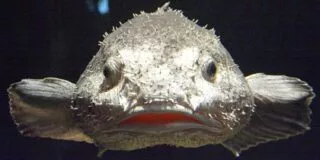Although bobcats seem like a larger version of house cats, they have their own unique features.
Here are 55 interesting facts about these standout wild cats that you probably didn’t know.
Bobcats are often found throughout Southern Canada, the United States, and Oaxaca, Mexico.
Their scientific name is Lynx Rufus.
Even though they are frequently hunted, bobcat populations remain stable, and they are classified as a species of the least concern.
There are two subspecies of bobcat; one species that reside east of the Great Plains in North America and one that lives on the west of the Great Plains.
It is believed that the bobcat evolved from the Eurasian lynx, which crossed into North America 2.6 million years ago.
Bobcats have an excellent sense of smell.
Similar to other cat species, bobcats are territorial animals and solitary animals.
A bobcat’s territory can range up to 30 square miles (78 square kilometers) for males and just five square miles (13 square kilometers) for females.
They will use different marking methods, such as claw marks and urine deposits for scent markings.
Generally, bobcats will avoid confrontation with other bobcats and respect each other’s territory.
Bobcats are crepuscular animals, meaning that they are primarily active during twilight.
Adult bobcats don’t have many predators – primarily mountain lions and gray wolves.
Bobcats will often climb trees to escape predators, chase prey, and rest as excellent climbers.
Bobcat kittens are more at risk of falling prey to owls, foxes, eagles, bears, and occasionally other bobcats.
Although bobcats are not a widespread endangered species, they are considered endangered in Ohio, Indiana, and New Jersey.
Most of the bobcat’s mating season occurs during February and March.
Female bobcats raise their young alone.
Research has shown that bobcats need a home range for breeding.
A female bobcat’s gestation period is about two months.
The mother will give birth to their young in a small cave, hollow logs, or any other enclosed space.
The average litter size is three kittens.
Kittens are born with full fur and a spotted coat.
Females have been known to use the same natal den for several years.
Baby bobcats don’t open their eyes until the ninth or tenth day.
Once they are three to five months of age, kittens will start traveling with their mother.
Kittens will learn to hunt by themselves in their first year and leave to be independent.
Juveniles experience the highest mortality rate shortly after leaving their mother while still learning hunting techniques.
Bobcats have short tails about 4-7 inches (10-18 centimeters) long.
On average, bobcats weigh between 15 and 40 pounds (6.8 and 18.1 kilograms).
The largest recorded bobcat weighed 50 pounds (22.7 kilograms).
Male bobcats are about 33% larger than female bobcats.
The coloring of bobcats is primarily brown with black spotting but can occasionally have a reddish tinge.
Because of their black spots, bobcats are also a target of hunting. Their pelts are precious in international trade.
The bobcat’s coat coloring helps it blend in with thick vegetation.
The bobcats that live in deserts have lighter coats, while bobcats in forested areas are darker.
Bobcats can communicate via scent, visual signs, and vocalization.
The average lifespan of a bobcat is seven years; however, the oldest wild bobcat recorded was 16 years old.
In captivity, the oldest bobcat lived to be 32 years old.
Bobcats can survive for long periods without food, but they feast on available prey.
Even though bobcats mostly eat small animals, they have been known to hunt deer or elk when prey is scarce.
Bobcat tracks may look similar to house cats; however, house cats have much smaller feet than the bobcat’s giant paws.
Their fifth toe is raised on their front feet, so there is no fifth impression when it walks.
Their sharp claws are retracted when they walk, so there are no claw marks on bobcat tracks.
Although they can swim, bobcats try to avoid water.
Bobcats are highly adaptable animals. They are not opposed to suburban areas as long as there is suitable prey.
Bobcats have been found in areas from Florida swamps to desert regions of Texas.
Bobcats can thrive in most areas despite human development and habitat loss, although they prefer to use a rock shelter when available.
Bobcats will have multiple den sites, usually with the main den and other auxiliary dens around their range.
Incidents with bobcats and people are improbable. You are more likely to have an adverse encounter with a domestic dog than a bobcat.
Bobcats are active all year without hibernation.
Bobcats are ambush predators, stalking their prey before chasing or pouncing.
As opportunistic predators, the diet of a bobcat is dependent on whatever animal is the most abundant.
If it is snowing or storming, bobcats prefer to wait out adverse weather in their shelters.
The paws of a bobcat are not as padded as the Canada lynx and can’t support its weight on snow as effectively.
Bobcats’ pawprints directly register, meaning their back paws land in the same place as their front feet were.
Bobcat FAQs

What do bobcats eat?
The preferred meal of bobcats is dependent on their region. In the Eastern U.S., bobcats mainly eat cottontail rabbits, and in the North, snowshoe hares are the primary food source.
How big is a bobcat?
The size of bobcats varies; however, they are generally from 1.5-2 feet (45.7-61 centimeters) tall and weigh between 15 and 40 pounds (6.8 and 18.1 kilograms). Bobcats in the north are usually larger than bobcats in the south.
How fast can a bobcat run?
Bobcats can run at speeds up to 30 mph (48 kph), surprisingly the same speed as domestic cats, although bobcats are larger.
Is a lynx a bobcat?
A bobcat is a species of lynx. There are four lynx species: Eurasian lynx, Canadian lynx, Iberian lynx, and of course, bobcat. All lynxes have distinguishable ear tufts.
Are bobcats carnivores?
Yes, bobcats are carnivorous. Aside from rabbits and hares, they eat other small mammals and birds. Occasionally, they may also prey on small farm animals but generally avoid areas inhabited by humans.
Bobcats are undoubtedly impressive animals with their highly adaptive skills and predatorial abilities.
Which of these bobcat facts surprised you the most?












